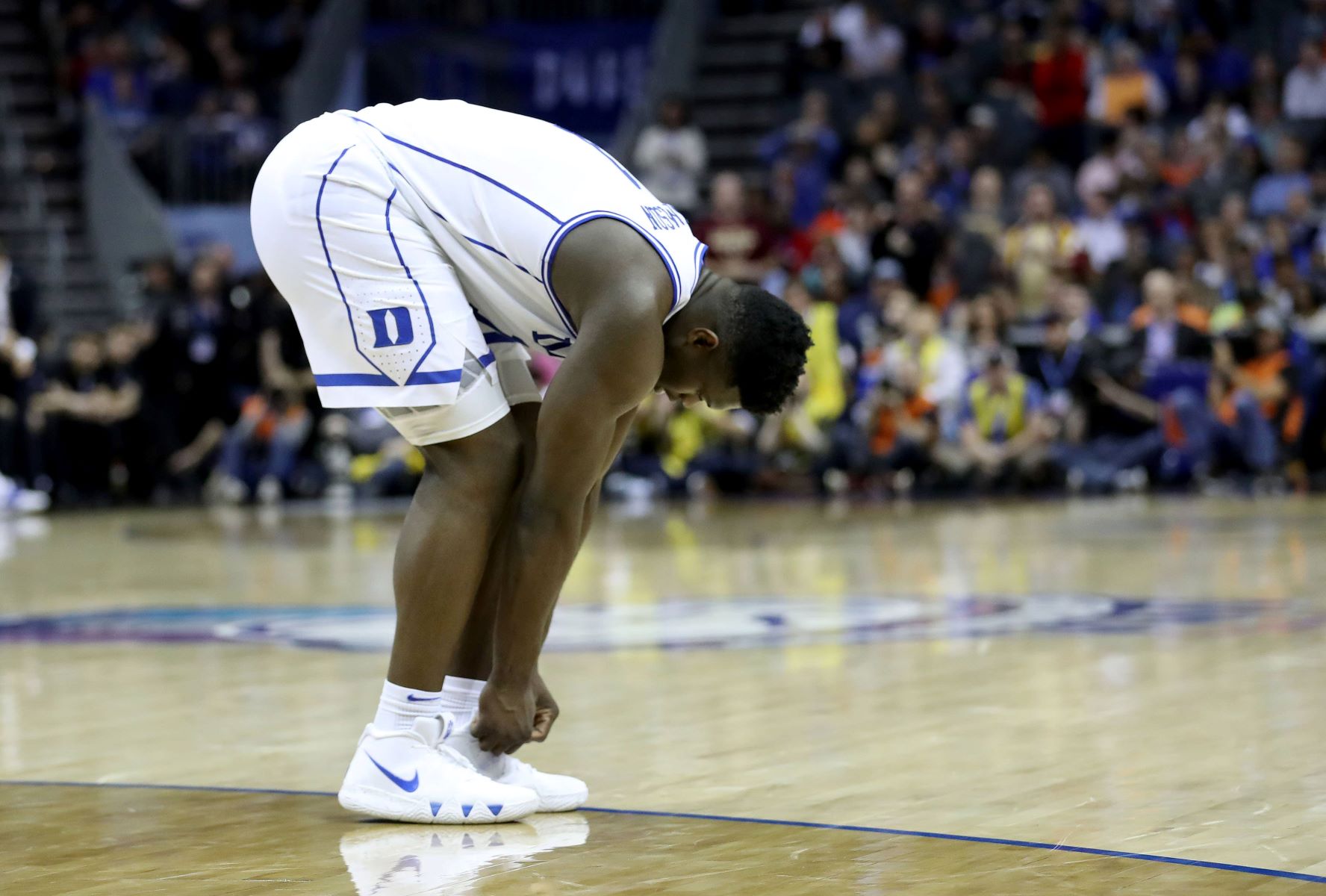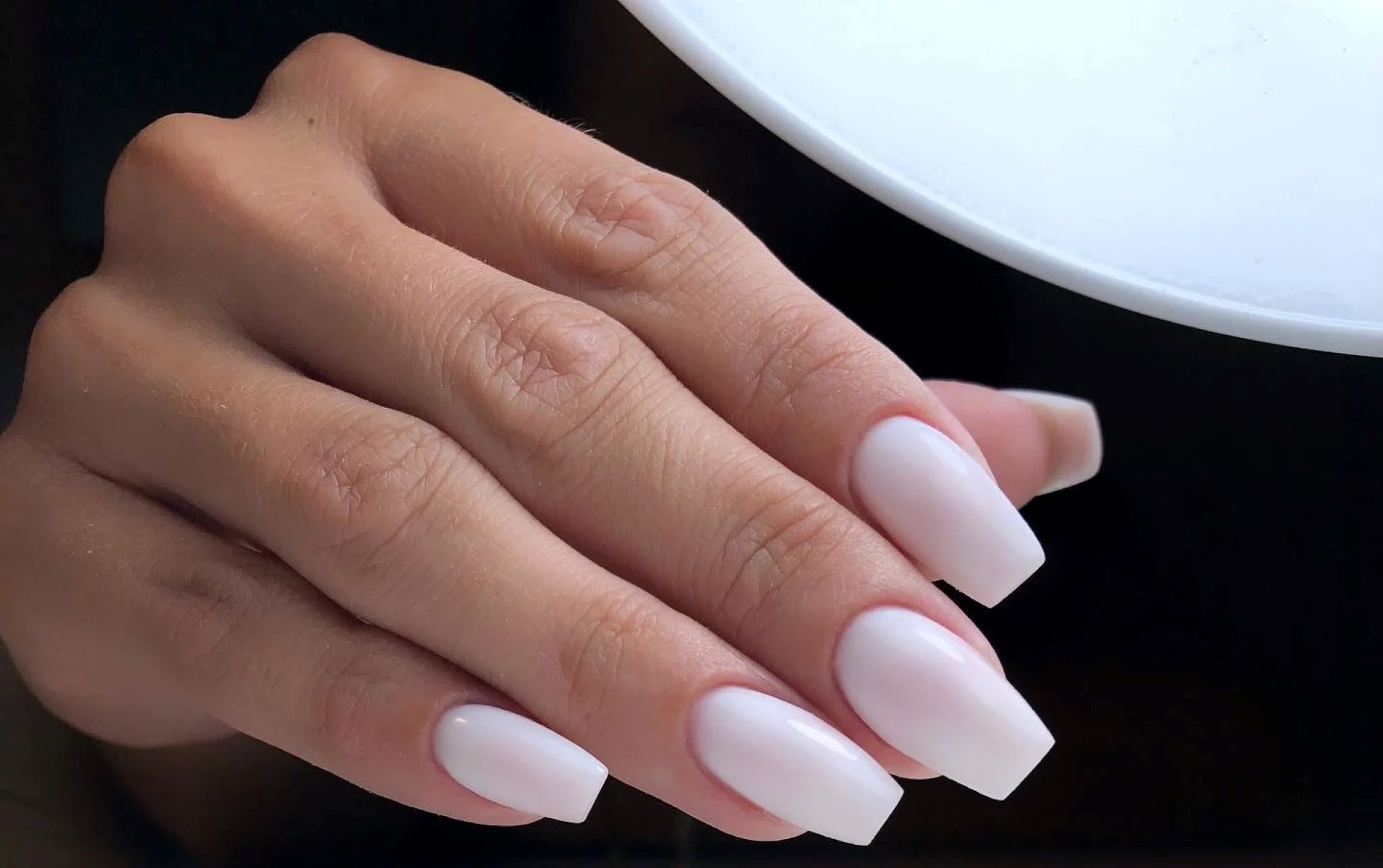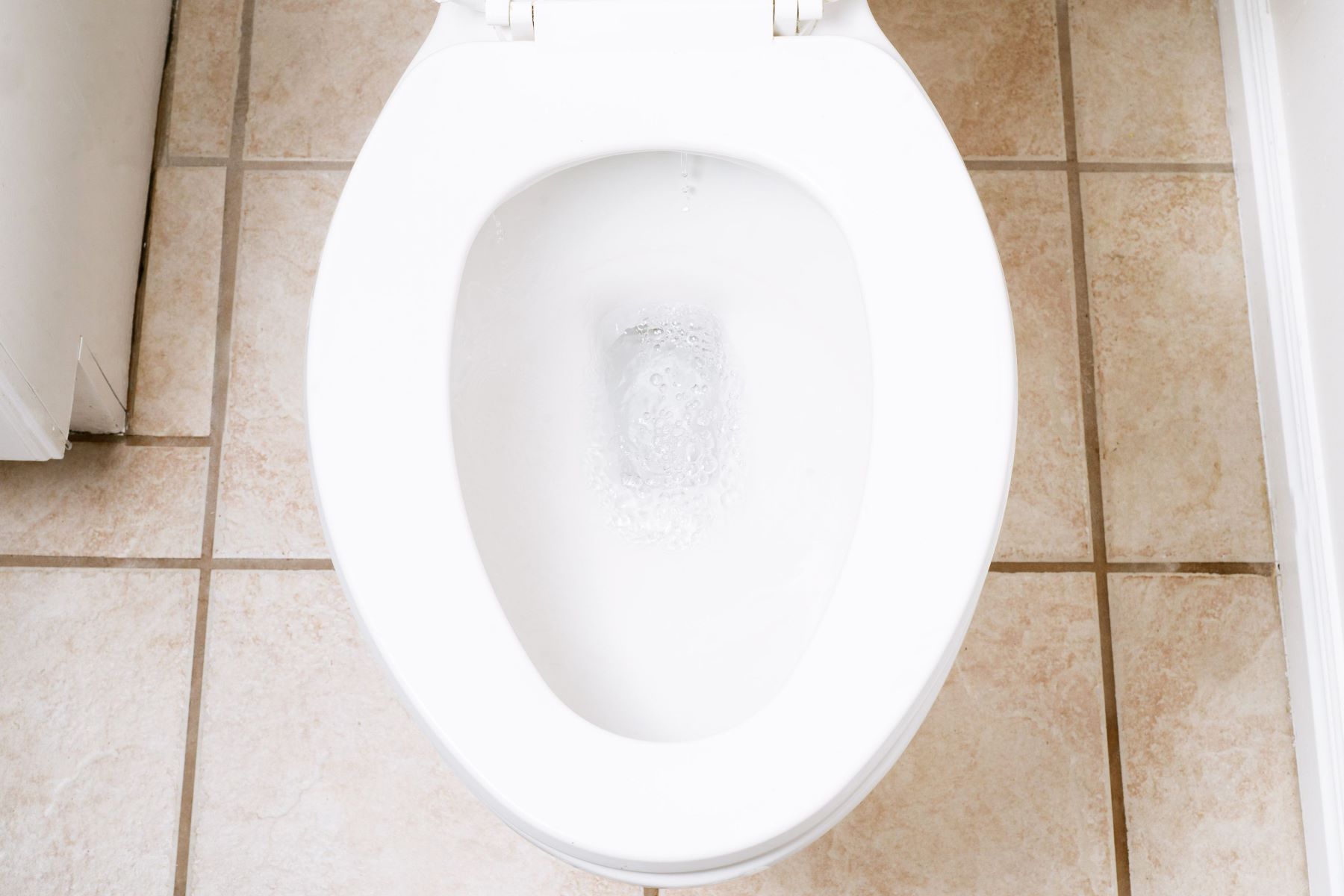Home>Sports>The Surprising Reason Why Basketball Players Can’t Stop Rubbing Their Shoes!


Sports
The Surprising Reason Why Basketball Players Can’t Stop Rubbing Their Shoes!
Published: January 22, 2024
Discover the secret behind why basketball players constantly rub their shoes on the court. Find out how sports and footwear are connected in a surprising way!
(Many of the links in this article redirect to a specific reviewed product. Your purchase of these products through affiliate links helps to generate commission for Regretless.com, at no extra cost. Learn more)
Table of Contents
Introduction
Basketball is a high-energy, fast-paced sport that demands agility, precision, and lightning-fast reflexes. One of the most intriguing aspects of the game is the ritualistic behavior exhibited by players, particularly the seemingly incessant act of rubbing the soles of their shoes. This peculiar practice has piqued the curiosity of fans and enthusiasts alike, leading to a quest for understanding the underlying reasons behind this behavior.
The act of rubbing the soles of their shoes has become an iconic gesture, almost a signature move for basketball players. It is a sight that is deeply ingrained in the fabric of the sport, often prompting questions such as, "Why do they do that?" and "Does it really make a difference?" Understanding the motivations behind this behavior requires delving into the evolution of basketball shoes, the pivotal role of traction in the game, and the fascinating science behind the seemingly innocuous act of shoe rubbing.
As we embark on this exploration, we will uncover the intricate relationship between basketball players and their shoes, unravel the scientific basis for their actions, and delve into the psychological factors that contribute to this intriguing phenomenon. Join us as we unravel the enigma behind why basketball players can't seem to stop rubbing their shoes!
The Evolution of Basketball Shoes
The evolution of basketball shoes is a captivating journey that mirrors the advancements in sports technology and the ever-changing demands of the game. In the early days of basketball, players wore simple canvas shoes with minimal cushioning and ankle support. These rudimentary shoes provided little in terms of performance enhancement, leaving players vulnerable to injuries and lacking the necessary support for the dynamic movements demanded by the sport.
As the game evolved, so did the design and functionality of basketball shoes. The 1970s marked a significant turning point with the introduction of the iconic Nike Blazer, which featured a high-top design aimed at providing ankle support and stability. This innovation revolutionized the basketball shoe market, setting the stage for a new era of performance-driven footwear.
The 1980s witnessed a surge in the development of basketball shoes, with brands such as Adidas and Converse making significant strides in technology and design. The introduction of cushioned midsoles, enhanced ankle support, and improved traction propelled the evolution of basketball shoes, catering to the specific needs of players and enhancing their on-court performance.
Fast forward to the present day, and basketball shoes have undergone a remarkable transformation, integrating cutting-edge materials, advanced cushioning systems, and innovative traction patterns. Brands like Nike, Adidas, and Under Armour have invested heavily in research and development, leveraging insights from professional athletes to engineer shoes that offer optimal support, responsiveness, and traction.
The evolution of basketball shoes has been characterized by a relentless pursuit of performance enhancement, driven by a deep understanding of the biomechanics and physical demands of the sport. Today's basketball shoes are a testament to the fusion of style and substance, seamlessly blending aesthetics with functionality to meet the diverse needs of players at every level.
In essence, the evolution of basketball shoes has been a narrative of progress, innovation, and a relentless pursuit of excellence. The journey from humble canvas sneakers to technologically advanced footwear mirrors the evolution of the sport itself, reflecting the unwavering commitment to empowering players with the tools they need to excel on the court.
The Role of Traction in Basketball
Traction is a pivotal element in the performance of basketball shoes, playing a profound role in the agility, stability, and overall movement of players on the court. The significance of traction cannot be overstated, as it directly influences a player's ability to make quick cuts, pivot with precision, and maintain balance during high-intensity maneuvers.
In the context of basketball, traction is synonymous with grip and adherence to the playing surface. The intricate patterns and materials used in the outsole of basketball shoes are meticulously designed to optimize traction, providing players with the necessary grip to propel themselves, change direction, and execute explosive movements with confidence.
The demands of basketball necessitate multidirectional movements, sudden stops, and rapid accelerations, all of which place immense strain on a player's footwear. The outsole of a basketball shoe serves as the primary point of contact with the court, making traction a critical factor in ensuring stability and control.
The design of the traction pattern is a result of extensive research and testing, with manufacturers employing advanced technologies to engineer outsoles that deliver superior grip across a variety of court surfaces. The depth, shape, and arrangement of the traction elements are strategically optimized to maximize surface area contact and minimize slippage, especially in high-pressure situations.
Furthermore, the composition of the outsole material is tailored to strike a delicate balance between durability, flexibility, and traction. High-quality rubber compounds with varying hardness levels are utilized to enhance grip while withstanding the rigors of intense gameplay.
The role of traction extends beyond individual performance, influencing team dynamics and overall gameplay. Enhanced traction empowers players to make decisive plays, secure rebounds, and execute defensive maneuvers with precision, ultimately impacting the outcome of the game.
In essence, the role of traction in basketball is a cornerstone of performance, serving as a catalyst for agility, stability, and dynamic movement. The evolution of traction technology in basketball shoes continues to redefine the boundaries of on-court capabilities, empowering players to push the limits of their athleticism and elevate their game to new heights.
The Science Behind Shoe Rubbing
The enigmatic ritual of basketball players incessantly rubbing the soles of their shoes is not merely a superstitious quirk; rather, it is deeply rooted in the science of friction and its profound impact on traction. As players engage in this seemingly habitual act, they are intuitively harnessing the principles of physics to enhance the grip and responsiveness of their footwear on the court.
Friction, the force that resists the relative motion of surfaces in contact, lies at the heart of the science behind shoe rubbing. When basketball players vigorously rub the soles of their shoes, they are effectively increasing the temperature of the rubber outsole. This rise in temperature induces a temporary softening of the rubber compound, leading to a microscopically enhanced grip on the court surface. The friction generated during the rubbing motion causes a localized increase in surface adhesion, amplifying the traction properties of the shoe.
Furthermore, the mechanical action of rubbing creates microscopic deformations on the outsole, resulting in an augmented contact area with the court. This phenomenon, known as the "stick-slip effect," is a manifestation of the intricate interplay between frictional forces and surface irregularities. The repetitive rubbing motion effectively primes the shoe's outsole, optimizing its ability to interlock with the playing surface and minimize slippage during dynamic movements.
The science behind shoe rubbing extends beyond the immediate tactile benefits, delving into the realm of player perception and confidence. Psychologically, the act of rubbing the shoes serves as a ritualistic preparation, instilling a sense of familiarity and trust in the footwear. This ritualistic behavior can have a profound impact on a player's mindset, fostering a heightened sense of control and assurance as they step onto the court.
In essence, the science behind shoe rubbing is a convergence of physics, material science, and psychology, culminating in a ritual that transcends mere superstition. It is a manifestation of the intricate relationship between players and their footwear, where scientific principles intertwine with human intuition to optimize on-court performance. As basketball players continue to engage in this time-honored tradition, they unknowingly pay homage to the profound influence of friction and the art of maximizing traction through the simple yet impactful act of shoe rubbing.
Psychological Factors
The act of rubbing the soles of their shoes transcends the realm of physical preparation; it delves into the intricate nuances of psychological conditioning and player confidence. At its core, this ritualistic behavior serves as a potent psychological anchor, imbuing players with a sense of familiarity, control, and readiness as they step onto the court.
Psychological priming plays a pivotal role in the pre-game routine of basketball players. The act of rubbing their shoes becomes a tactile manifestation of mental preparation, signaling a transition from the external distractions of the surroundings to the internal focus required for peak performance. This ritualistic behavior serves as a form of sensory activation, engaging the player's tactile senses and channeling their attention towards the impending challenge.
Moreover, the repetitive nature of shoe rubbing fosters a rhythm and cadence that aligns with the player's pre-game routine, creating a familiar and comforting pattern amidst the high-stakes environment of competitive play. This rhythmic ritual can serve as a grounding mechanism, allowing players to center themselves and cultivate a state of mental composure before the opening tip-off.
The psychological impact of this behavior extends beyond individual players, permeating the collective psyche of the team. As players engage in the shared ritual of shoe rubbing, it fosters a sense of unity and cohesion, reinforcing the bonds of camaraderie and shared purpose. This communal act serves as a symbolic gesture, unifying the team in a collective mindset of readiness and determination.
Furthermore, the act of shoe rubbing can be viewed as a form of positive reinforcement, instilling a sense of confidence and empowerment in players. The tactile engagement with their footwear creates a tangible connection to their equipment, fostering a subconscious belief in the capabilities of their shoes and, by extension, their own abilities on the court.
In essence, the psychological factors underlying the ritual of shoe rubbing are a testament to the profound influence of mental conditioning and player mindset in the realm of sports. It is a ritual steeped in tradition, superstition, and the unwavering belief in the power of psychological preparation. As players partake in this age-old tradition, they are unwittingly embracing the psychological underpinnings of athletic performance, harnessing the intangible forces of confidence, unity, and mental readiness as they embark on the exhilarating journey of competitive basketball.
Conclusion
The enigmatic ritual of basketball players incessantly rubbing the soles of their shoes is a testament to the intricate relationship between athletes and their footwear. As we have delved into the evolution of basketball shoes, the pivotal role of traction in the game, the science behind shoe rubbing, and the psychological factors at play, a profound understanding has emerged.
The evolution of basketball shoes mirrors the relentless pursuit of performance enhancement, culminating in the fusion of style and substance to meet the diverse needs of players at every level. From humble canvas sneakers to technologically advanced footwear, the journey underscores the unwavering commitment to empowering players with the tools they need to excel on the court.
Traction, as a cornerstone of performance in basketball, is synonymous with grip, stability, and dynamic movement. The evolution of traction technology continues to redefine the boundaries of on-court capabilities, empowering players to push the limits of their athleticism and elevate their game to new heights.
The science behind shoe rubbing unveils a convergence of physics, material science, and psychology, culminating in a ritual that transcends mere superstition. It is a manifestation of the intricate relationship between players and their footwear, where scientific principles intertwine with human intuition to optimize on-court performance.
Psychologically, the act of rubbing the soles of their shoes becomes a potent anchor, imbuing players with a sense of familiarity, control, and readiness as they step onto the court. It serves as a form of sensory activation, engaging the player's tactile senses and channeling their attention towards the impending challenge.
In essence, the ritual of shoe rubbing is a timeless tradition that embodies the fusion of science, technology, and psychology in the realm of sports. It is a testament to the enduring legacy of basketball and the indelible bond between players and their footwear, serving as a tactile ode to the pursuit of excellence and the unwavering commitment to achieving peak performance on the hallowed courts of the game.














